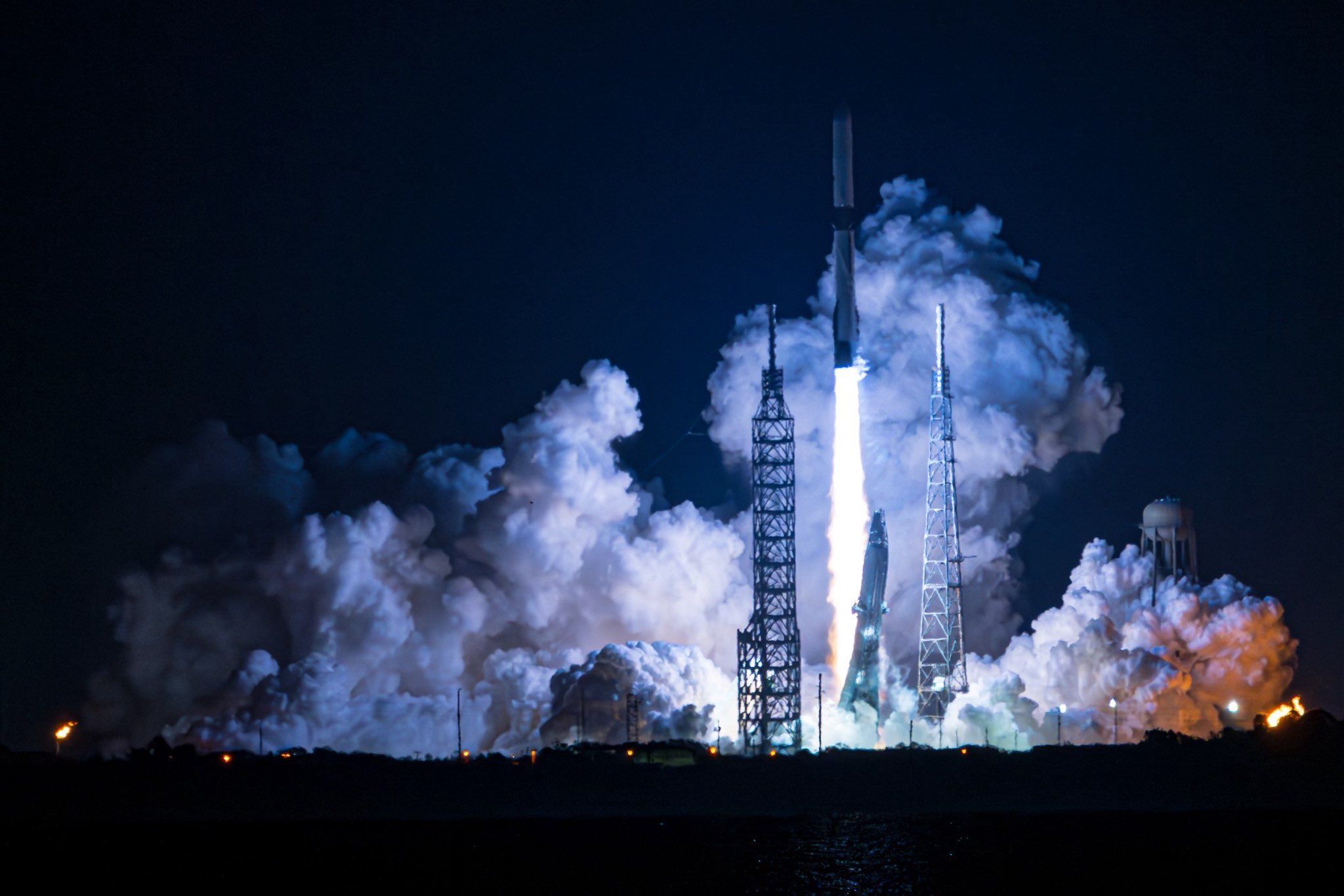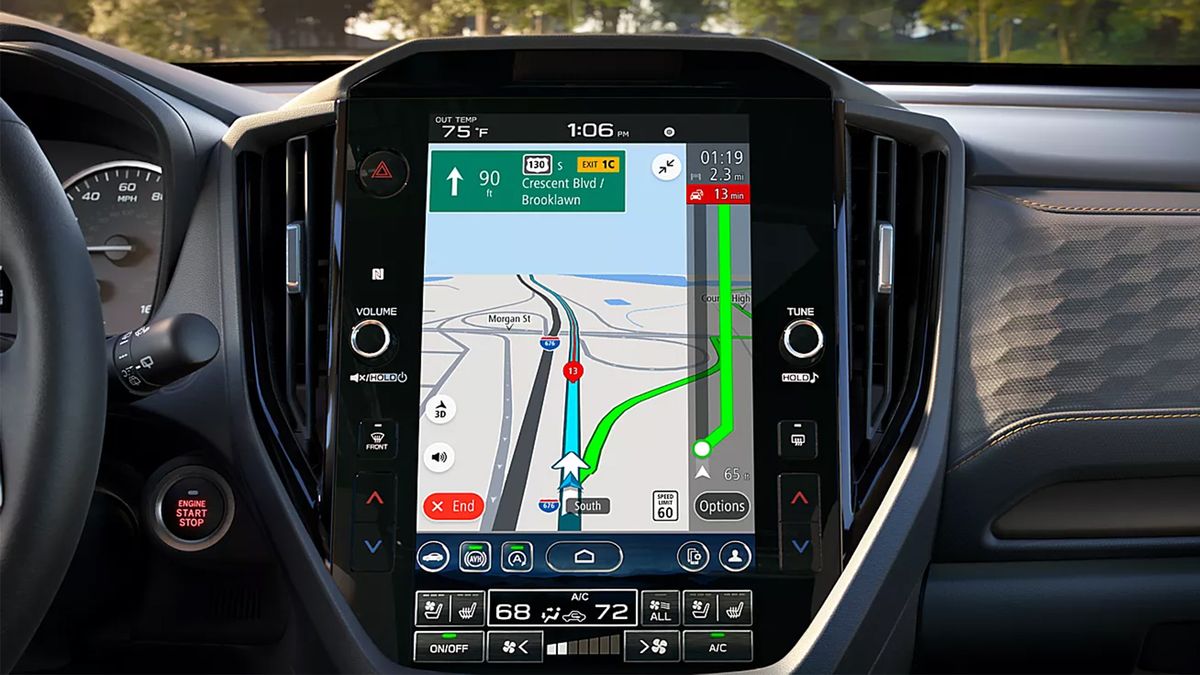"The computed numbers below prove that this is quite feasible with margins to spare."
Blue Origin's New Glenn rocket launches from Cape Canaveral Space Force Station early on Thursday morning. Credit: Blue Origin
Welcome to Edition 7.27 of the Rocket Report! Thursday was an eventful day in super heavy lift launch, with Blue Origin's New Glenn rocket having a highly successful debut launch before dawn in Florida, at Cape Canaveral Space Force Station. Then, on Thursday afternoon, an upgraded Starship took flight from South Texas. The first stage performed well, but the Starship upper stage experienced a rapid unscheduled disassembly during its ascent. Ars will, of course, have full and ongoing coverage.
As always, we welcome reader submissions, and if you don't want to miss an issue, please subscribe using the box below (the form will not appear on AMP-enabled versions of the site). Each report will include information on small-, medium-, and heavy-lift rockets, as well as a quick look ahead at the next three launches on the calendar.

RFA receives launch license. The UK Civil Aviation Authority has issued Rocket Factory Augsburg a vertical launch license to conduct the inaugural flight of its RFA ONE rocket from SaxaVord Spaceport in Scotland, European Spaceflight reports. The license is for the launch of the company's RFA One rocket, which has an advertised payload of 1.3 metric tons to low-Earth orbit. RFA said it intends to complete the launch sometime this year.
A new era for BritSpace... The company might have launched sooner, but last year, a fire during testing destroyed the rocket’s first stage, forcing RFA to build a replacement before proceeding with the initial launch attempt. An orbital-class rocket has never launched in a vertical configuration before from the United Kingdom, and no rocket has ever successfully reached orbit from there. "This is a new era for aerospace, and granting the first vertical launch license from UK soil builds toward a historic milestone for the nation," said Rob Bishton, chief executive of the civil authority. (submitted by EllPeaTea)
Chinese rocket launches from sea platform. China launched a Jielong-3 solid rocket from a mobile sea platform late Sunday, successfully placing 10 Centispace navigation enhancement satellites into orbit, Space News reports. This was the fifth Jielong-3 (or Smart Dragon-3) solid propellant rocket, and it lifted off from a specially converted sea barge off the coast of Haiyang city in the Eastern province of Shandong.
Seeking to scale up quickly... The launch was carried out using facilities belonging to the Haiyang Eastern spaceport for sea launches. The spaceport plans more than 10 for 2025, having conducted six sea launches in 2024. The launch was China’s second orbital launch attempt of 2025 and the second success in as many tries.
The easiest way to keep up with Eric Berger's and Stephen Clark's reporting on all things space is to sign up for our newsletter. We'll collect their stories and deliver them straight to your inbox.
Utah considering a spaceport. State Sen. Jerry Stevenson has introduced a bill to form a committee that would investigate whether Utah should invest in a spaceport and what benefits it could bring to the state, KUTV Salt Lake City reports. The legislation would provide $500,000 for a committee to study the potential benefits of a launch site. Stevenson said the committee would look into both scientific uses and opportunities to expand Utah’s tourism industry, but questions remain over whether such a taxpayer-funded investment makes financial sense.
Something to build on... When asked how the state would get a return on its investment, Stevenson said the spaceport would align with Utah’s current industries and infrastructure. "We think that this fits very well into what’s going on in the state of Utah and what’s already here and what we can build on," Stevenson said. Still, critics wondered if the state should focus on space tourism, especially given the potential costs, possibly on the order of hundreds of millions of dollars.

Stoke Space goes nova in fundraising round. The Washington-based launch company announced Wednesday that it had raised $260 million in Series C funding, a significant capital raise at a time when it has become more difficult for some space companies to attract funding, Ars reports. "The market is tough, but I think what we’re doing is poised to go straight to the end state of the industry, and I think investors recognize that," said Andy Lapsa, Stoke Space's co-founder and chief executive officer.
Full reuse right out of the gate... By "end state of the industry," Lapsa means that Stoke is developing a fully reusable medium-lift rocket named Nova. The vehicle's first stage will land vertically, similar to a Falcon 9 rocket, and the second stage, which has a novel metallic heat shield and engine design, will also land back on Earth. Historically, it is unlikely for a company to move from engine testing to a first orbital launch attempt in the same year, so a Nova debut in 2026 seems more likely. Nevertheless, the new funding from investors signals confidence that Stoke is making credible technical progress on its vehicle development. (submitted by EllPeaTea)
The initial launch plan for Neutron. Rocket Lab is closing in on the completion of its Neutron rocket, and the company plans to launch the medium-lift booster for the first time later this year. With a capacity of 13 metric tons to low-Earth orbit, the rocket will be sold at a cost of $50 million to undersell SpaceX's Falcon 9 rocket for megaconstellation launches. Falcon 9 can launch 17.5 metric tons to LEO in a reusable configuration, which is often a higher capability than the customer needs, Payload reports. So on a price-per-launch basis, if Neutron can deliver, it could provide credible competition.
A slow ramp-up... Rocket Lab intends to launch a single Neutron this year, followed by three rockets in 2026 and five in 2027. This may not be as flashy as saying the company will ramp up to a dozen rockets next year, but I appreciate the realism in launch cadence. Companies never increase their launch cadence as quickly as they say they will. However, speaking of realism, it's realistic to question whether Neutron will actually make it to the launch pad this year. I'd bet no, but I'd love to be proven wrong.
Two lunar landers launch on Falcon 9. A SpaceX Falcon 9 rocket lifted off from NASA's Kennedy Space Center in Florida early Wednesday and deployed two commercial lunar landers on separate trajectories to reach the Moon in the next few months, Ars reports. It took about an hour and a half for the Falcon 9 rocket to release both payloads into two slightly different orbits, ranging up to 200,000 and 225,000 miles (322,000 and 362,000 kilometers) from Earth.
A lunar double shot... The two robotic lunar landers—one from Firefly Aerospace based near Austin, Texas, and another from the Japanese space company ispace—will use their own small engines for the final maneuvers required to enter orbit around the Moon in the coming months. Firefly and ispace reported that their landers, each about the size of an SUV, were healthy as ground teams in Texas and Japan activated the spacecraft soon after their separation from the Falcon 9 launch vehicle.
ArianeGroup completes Prometheus engine test. Although it was not revealed until January 9, ArianeGroup completed a successful hot fire test of the Prometheus rocket engine in late December 2024, European Spaceflight reports. European Space Agency Director General Josef Aschbacher referred to the "very important" test during his annual press briefing. Afterward, an ESA spokesperson confirmed that the test had taken place on December 19 on the PF20 test bench at the ArianeGroup facilities in Vernon, France.
A nominal test... The test of the liquid oxygen and biomethane engine lasted for 41 seconds, with the engine reaching 100 percent of its thrust. Prometheus is slated to initially power the Themis reusable booster demonstrator, a project also being developed by ArianeGroup under an ESA contract. In addition to its use by Themis, Prometheus will also be utilized by ArianeGroup subsidiary MaiaSpace to power its partially reusable Maia rocket. (submitted by EllPeaTea)
The hidden MVP of SpaceX's high cadence. On any given day, SpaceX is probably launching a Falcon 9 rocket, rolling one out to the launch pad, or bringing one back into port. With three active Falcon 9 launch pads and an increasing cadence at the Starbase facility in Texas, SpaceX's teams are often doing all three. The company achieved another milestone last Friday with the 25th successful launch and landing of a single Falcon 9 booster. This rocket, designated B1067, launched a batch of 21 Starlink Internet satellites from Cape Canaveral Space Force Station, Florida. Ars has reported on these rocket reuse milestones before, but SpaceX is breaking its own records so often that we've dialed back our coverage.
Building a lot of upper stages... SpaceX's accomplishment of 25 flights offers an opportunity to step back and take in some context. Although everyone focuses on reuse, SpaceX is still building new second stages for every launch. The task of building so many spaceships in a year is a tall order. While SpaceX's competency with reusing Falcon 9 boosters gets a lot of attention—landing a rocket is still incredible, even after seeing it nearly 400 times—the high-rate manufacturing of Falcon 9 upper stages is the secret MVP. It also suggests that the company's goal to build 100 Starships a year is not crazy.

New Glenn makes a triumphant first flight. For the first time since its founding nearly a quarter of a century ago, Blue Origin has reached orbit. The long-awaited debut launch of the New Glenn rocket, a super-heavy lift vehicle developed largely with private funding, was a smashing success in its debut launch early on Thursday morning, Ars reports. The launch occurred a little more than one hour into the launch window. Liftoff was delayed, at first, by an unspecified issue with properly chilling the BE-4 engines ahead of launch. Then there was a wayward boat.
No landing, no problem... Ultimately, the rocket launched at 2:03 am in the morning, local time, at Florida's Cape Canaveral Space Force Station. The first and second stages both appeared to perform nominally, and the Blue Ring pathfinder was put into its intended orbit. The only downer came a bit later when Blue Origin's Ariane Cornell confirmed that the first stage did not successfully return to a drone ship in the Atlantic Ocean. But no one who really understands the difficulties of launching and landing rockets believed that Blue Origin would succeed in catching its first orbital booster, and the company deserves credit for making the attempt rather than criticism for failing to stick the landing.
How to do Artemis without SLS or Starship. There has been a lot of discussion about potential changes to the Artemis Program under the incoming Trump administration, including on Ars. In The Space Review, engineer Ajay Kothari offers an architecture that is based on the Falcon Heavy rocket rather than NASA's Space Launch System or SpaceX's Starship rocket. "The computed numbers below prove that this is quite feasible with margins to spare," Kothari wrote about using Falcon Heavy to get Orion to the Moon. "Although three dockings in LEO would be required for the Orion, there is no refueling need and it is a much smaller number than the Starship HLS refueling estimates."
There is a catch... Because there is always a catch, right? Kothari writes: "The lander would have to be built by NASA. It would be like the Apollo 17 Lunar Module, called Challenger, which carried two astronauts to the surface from LLO. It had a mass of 16.5 tons, so the new one here is bookkept at 18 tons wet mass, including higher consumable for a 6.5-day stay." If we're being realistic, if NASA were to put out a call for bids for a lunar lander tomorrow, it would not have one in hand before the end of the decade at the very earliest. So if NASA is going to the lunar surface in the 2020s, it's likely Starship or bust.
Upgraded Ariane booster to undergo tests. The European Space Agency will begin testing the P160 solid-fuel booster in March 2025, European Spaceflight reports. The booster, which is to be strapped onto the Ariane 6 rocket, will replace the current P120 booster and will be a key element in enabling Arianespace to deliver on an 18-launch contract for Amazon. For 16 of its 18 missions for Amazon to launch Project Kuiper satellites, the Ariane 6 rocket will launch with four of the more powerful boosters.
Don't forget about Vega... The P160 motor will replace the P120 booster currently in service. The upgraded boosters will increase the capacity of the Ariane 6 rocket by about 2 tons to low-Earth orbit. In addition to Ariane 6, the P160 boosters will also be utilized by Avio aboard the upgraded Vega C+ and the company’s next-generation Vega E rocket. (submitted by EllPeaTea)
Next three launches
Jan. 18: Falcon 9 | Starlink 11-8 | Vandenberg Space Force Base, Calif. | 15:57 UTC
Jan. 21: Falcon 9 | Starlink 13-1 | Kennedy Space Center, Florida | 05:13 UTC
Jan. 22: Falcon 9 | Starlink 11-6 | Vandenberg Space Force Base, Calif. | 14:38 UTC

Eric Berger is the senior space editor at Ars Technica, covering everything from astronomy to private space to NASA policy, and author of two books: Liftoff, about the rise of SpaceX; and Reentry, on the development of the Falcon 9 rocket and Dragon. A certified meteorologist, Eric lives in Houston.











 English (US) ·
English (US) ·